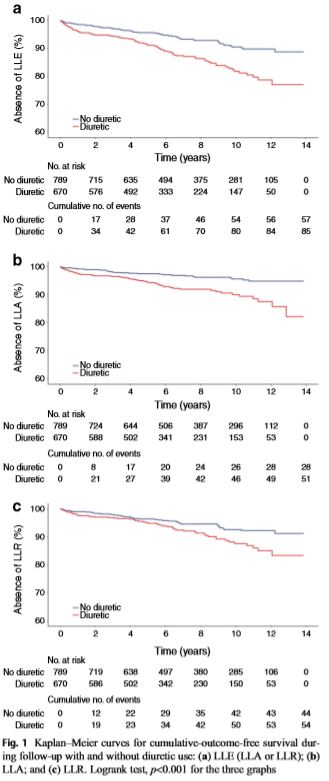Lower limb events in individuals with type 2 diabetes: evidence for an increased risk associated with diuretic use
Lower limb amputation and revascularisation are highly prevalent in people with 2 diabetes. The high prevalence of this debilitating complication in people with diabetes is explained by a wide range of factors, such peripheral arterial disease, diabetic neuropathy, impaired wound healing, susceptibility to infection and others. Ischaemia is associated with a dramatic increase risk of lower limb amputation in people with diabetes and foot ulcers. Hypovolaemia could further decrease peripheral perfusion in people with peripheral arterial disease, favouring decompensation and eventually lower limb amputation.
Some evidence from randomised controlled trial and observational data suggests that sodium-glucose cotransporter 2 (SGLT2) inhibitors could be associated with an increased risk of lower limb amutation. A potential mechanism for the increased risk of lower limb amputation observed with SGLT2 inhibitors is the drug’s glycosuria-induced osmotic diuresis.
Based on this, diuretics should also show a similar safety profile. Indeed, a number of studies have analysed the association between use of diuretics and lower limb amputation. These studies were however limited in terms of type of diuretic or number of participants with diabetes.
In the present work, we analyse the association between diuretics and the incidence of lower limb events, lowerl limb amputation or lower limb revascularisations, in a prospective observational cohort of people with type 2 diabetes.

To read the full paper, head to the following link:





